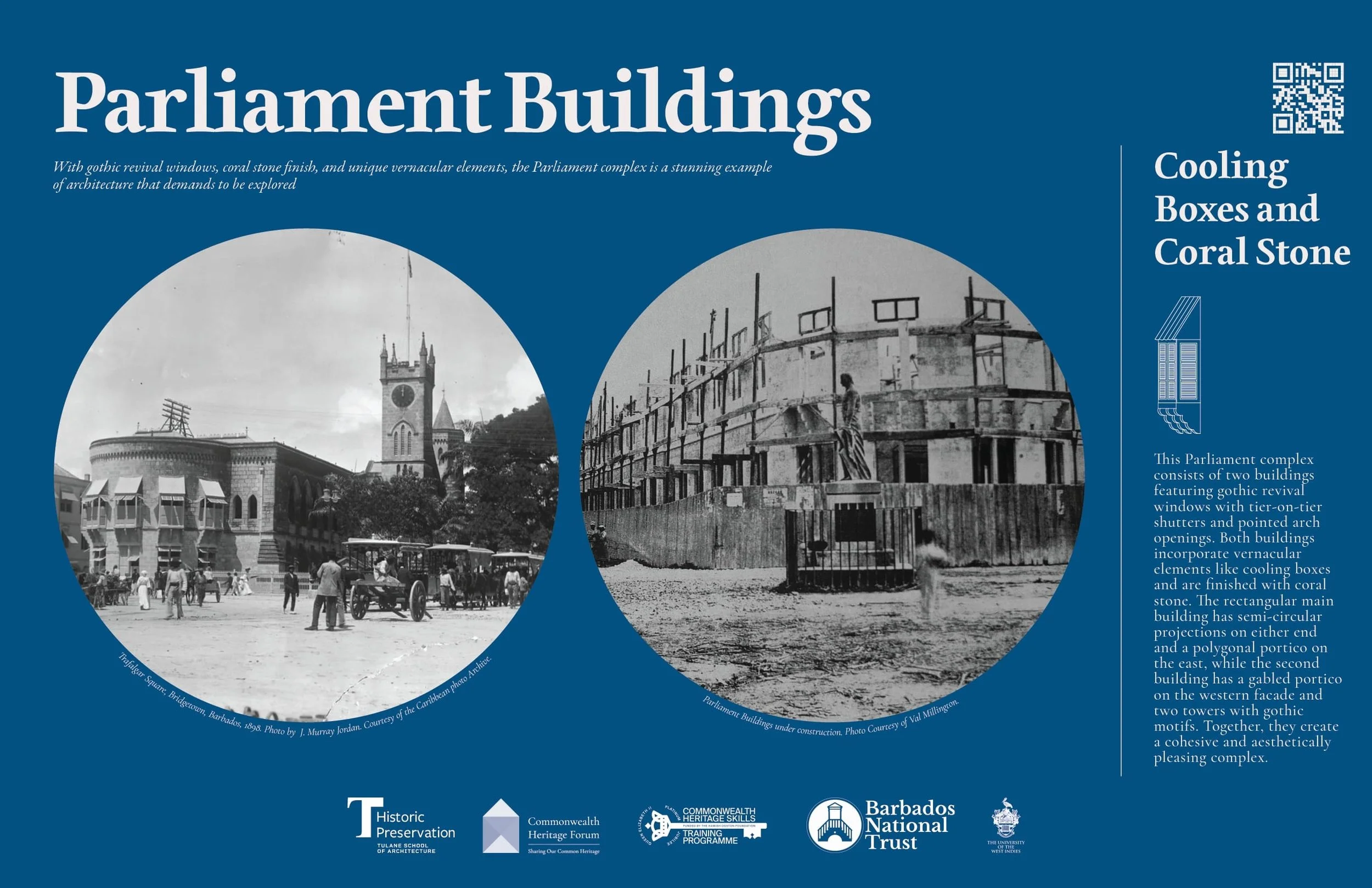Roebuck Street,
Bridgetown, Barbados
(UNESCO World Heritage Site)
PRES 6042 | Preservation Studio II
Professors Brent Fortenberry & Mary Helen Potter
From January 3 to 15, 2023, I participated in an intensive field-based preservation studio led by Tulane University’s Historic Preservation Program, in collaboration with the Barbados National Trust, the Roebuck Street Redevelopment Trust, and academic partners from the University of the West Indies – Cave Hill and the Commonwealth Heritage Skills Training Program. The studio focused on Roebuck Street and its surrounding areas in Bridgetown, part of the Historic Bridgetown and its Garrison UNESCO World Heritage Site.
Our student team documented key architectural sites—including the Nidhe Israel Synagogue, the Parliament Buildings, and several historic churches—while situating the area within the broader development of Bridgetown and Barbados. Using Historic American Building Survey (HABS) standards, we produced hand drawings, photographic documentation, and a conditions assessment. The fieldwork also included 3D laser scanning with a Leica RTC 360, resulting in 201 high-density scans and a composite point cloud of over 675 million data points. Final outputs were exported in LGS, RCP, and E57 formats.
I was responsible for portions of the archival research, identification of architectural features, and conditions surveys via ESRI 123. I produced photogrammetric orthoimages for delineation, contributed to building descriptions, and wrote sections of the report—including the introduction.
The 703-page final report will inform a Conservation Management Plan, Design Guidelines for future interventions, and a Heritage Tourism Plan with interpretive materials for historic sites and museums. As part of the interpretation phase, students also developed proposals for a walking heritage loop and a museum installation, including panel designs and exhibit concepts—work that was later featured in Dezeen for its public-facing vision of cultural stewardship and community engagement.
Team Contributions
This was a collaborative student project involving participants from Tulane, the University of the West Indies, and UK-based heritage programs.



























